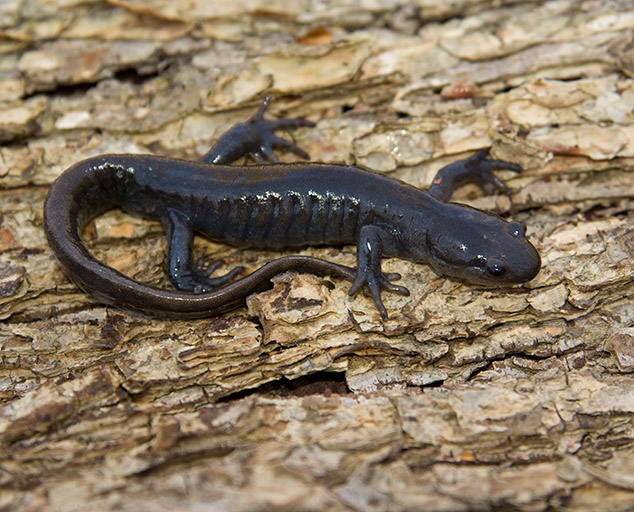
polar bear. Image by Elizabeth Labunski. Retrieved from https://digitalmedia.fws.gov/digital/collection/natdiglib/id/2761/rec/31
Polar bears (Ursus maritimus) have been experiencing the effects of climate change particularly hard. Polar bears rely on spring feeding in order to build up fat reserves for the summer-fall fasting period, and as seal pups are birthed, it provides ample opportunity for polar bears to do so. However, as the global temperature continues to increase, the abundance of sea ice declines. While polar bears are strong swimmers, they rely on sea ice to use as platforms while they hunt seals. Without the sea ice, their ability to effectively and efficiently hunt is diminished. This results in polar bears having less fat storage going into the summer-fall fasting period in which food sources become even more scarce as the bears lose access to marine animals. Polar bears don’t den during this time, so this period is often referred to as “walking hibernation”. As the sea ice returns in the winter months, polar bears are once again able to access marine animals for food.
Polar bears have shown increasing signs of fasting over the years. Between 1985 and 2006, the percent of polar bears in a fasting state in April grew over 300% (Cherry et al., 2009). The spring months are a time in which polar bears should be feasting to increase fat storages for the coming fasting period. 120-day fasts are typical for male and non-pregnant female polar bears during these summer-fall months (Robbins et al., 2012). However, this period is predicted to increase to 180 days as temperatures continue to rise. Over a 180-day fasting period, adult males experience a 28% mortality rate, increased from 3% during a 120-day fast.
This increase in fasting time is even more concerning for pregnant females. Since pregnant female polar bears den on land during the winter, they will have to go up to 8 months without food. During the summer-fall fasting period, daily mass loss, energy expenses, and loss of lean mass is much higher than in hibernating bears. By increasing this fasting period due to climate change, polar bears will go into the winter with less mass than usual. Since heavier females are more likely to produce larger cubs, and thus increase the probability of cub survival, pregnant females want to go into winter with as much fat storage as possible. It is estimated that pregnant females would need more than 34% body fat leading into the summer-fall fasting period in order to successfully reproduce during the winter (Robbins et al., 2012).

polar bear with cub. Image by Scott Schliebe. Retrieved from https://digitalmedia.fws.gov/digital/collection/natdiglib/id/10931/rec/5
As temperatures continue to increase and sea ice continues to melt, the future for polar bears is tenuous. For pregnant females in particular, an abundant spring is of extreme importance for survival of the summer-fall fasting. As this fasting period increases due to sea ice melting earlier in the season, more and more polar bears won’t make it through to the winter. Additionally, pregnant females won’t be able to make it through the fasting with enough fat reserves left to successfully reproduce. Populations will continue to decrease as reproduction rates fall, making it of the utmost importance to ensure enough sea ice for an abundant spring feast.
References:
Cherry, S.G., Derocher, A.E., Stirling, I. et al. Fasting physiology of polar bears in relation to environmental change and breeding behavior in the Beaufort Sea. Polar Biol 32, 383–391 (2009). https://doi.org/10.1007/s00300-008-0530-0
Labunski, Elizabeth 2008, Polar bear, U.S. Fish and Wildlife Service, accessed Feb 12, 2024, <https://digitalmedia.fws.gov/digital/collection/natdiglib/id/2761/rec/31>
Robbins, C. T., Lopez-Alfaro, C., Rode, K. D., Tøien, Ø., & Nelson, O. L. (2012). Hibernation and seasonal fasting in bears: The energetic costs and consequences for polar bears. Journal of Mammalogy, 93(6), 1493–1503. https://doi.org/10.1644/11-mamm-a-406.1
